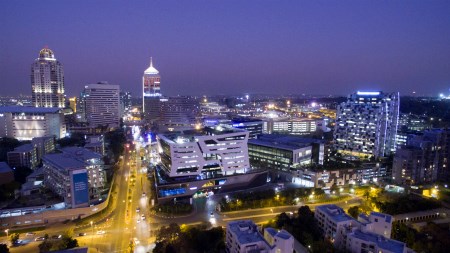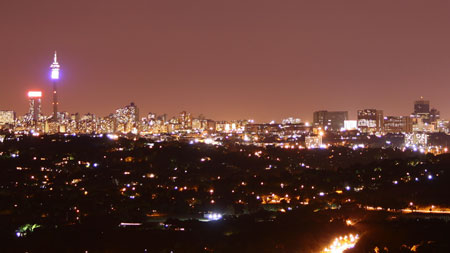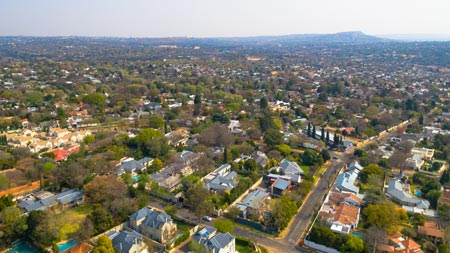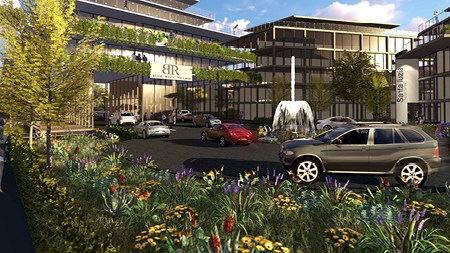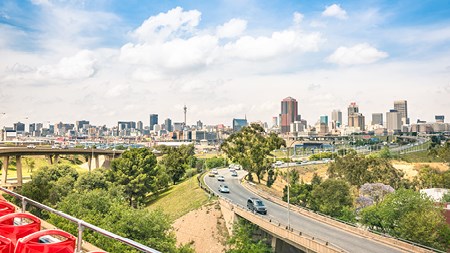Johannesburg might not be the oldest or prettiest city but it does play host to some architectural gems which are worth seeing.
Interestingly, there are a surprisingly large number of buildings which have been identified across Johannesburg by the South African Resources Heritage Agency (SAHRA) as worthy of heritage site status.
Buildings which are recognised by SAHRA have to meet specific criteria. These include, amongst others, the value it adds to South Africa’s history, the degree to which a building possesses or defines uncommon or rare aspects of South Africa’s heritage and the potential to yield information that will further contribute to our understanding of our cultural heritage.
Fortunately, for those interested in Johannesburg’s architectural past, many of the buildings lie within fairly close proximity of each other and can be viewed via various tours. The following are just a few of Johannesburg’s most notable buildings which have been recognised by SAHRA.
The View, 18 Ridge Road, Parktown:
The View was built in 1897 which potentially makes it the oldest surviving house in Johannesburg. It forms part of the ‘Parktown Mansions’ collection and was so named for the incredible views it once enjoyed over Johannesburg. Indeed, on a clear day it was apparently possible to see all the way to Magaliesberg. Unfortunately, in later years, the view was somewhat obscured by the construction of the University of the Witwatersrand’s campus.
The View was constructed by Charles Aburrow for Sir Thomas Cullinan. It was designed along Victorian architectural lines and features beautiful red bricks offset by white wooden balconies, large bay windows and intricate ironwork.
The View currently houses the Transvaal Scottish Regiment’s headquarters and is open to the public as a museum and business venue. The South African Scottish Memorial which is dedicated to South African Scots who were killed during both World Wars lies directly across the road from the house.
Rissik Street Post Office, Johannesburg:
 The iconic Rissik Street Post Office
The iconic Rissik Street Post Office
The once glorious Rissik Street Post Office was built in 1897. Its construction was commissioned by President Paul Kruger who was inspired after a trip to Europe to construct buildings which demonstrated government’s power. It was designed by the Dutch architect Sytze Wierda and was at one time the tallest building in Johannesburg at 102m’s.
The Post Office is fashioned along European and Renaissance lines. The façade is characterised by red bricks, bay windows set in grey plaster, European columns and balconies, a dominant clock tower and matching cupolas.
The Post Office was named a National Monument in 1978 and operated until 1996 when the South African Post Office vacated the building. Unfortunately, the building was gutted by fire in 2009 and numerous architectural elements including copper from the dome, the clock hands and brass bells were stolen. The building was also badly vandalised. Fortunately, reconstruction work has now begun which is estimated to cost approximately R147m.
Anstey’s Building, Corner Jeppe and Joubert Street, Johannesburg:
If art deco is your thing, then the Anstey’s Building is definitely worth a look. The building was named after the original owner of the building, Norman Anstey, whose Norman Anstey and Company Department store occupied the four-storey podium of the building.
The building was constructed in 1935 and features a curved façade orientated towards the street corner. It is described as being designed in a dramatic ‘ziggurat’ style, meaning it follows the lines of a terraced step pyramid style structure. The building consists of two stepped wings set at right angles to each other which feature corner flats with beautiful bay window balconies.
The building was constructed from reinforced concrete and features steel windows and doors, decorative bronze and chrome grills, large plate glass windows on the ground floor, parquet flooring and picture rails.
Today, Anstey’s Building is the home of the Preservation Trust, a mix of residents, a medical centre, a crèche and various other amenities. The building is in the process of being upgraded.
Northwards, 21 Rockridge Road:
 The Northwards mansion at 21 Rockridge Road
The Northwards mansion at 21 Rockridge Road
The Northwards Mansion on Rockridge Road was designed by the highly acclaimed architect Sir Herbert Baker on behalf of Sir John Dale Lace and his flamboyant wife Lady Josie Dale Lace in 1904.
The mansion is hailed as a fine example of the Arts and Crafts movement. Notable features include the use of stone sourced on site, plastered brickwork, a beautiful minstrel gallery and Juliette balconies. Warm wood panelling and floors feature throughout the interior of the mansion which also houses period furniture and an interesting collection of portraits.
In addition to being an attractive heritage property, Northwards also stands out for the way in which it was constructed. At the time of its construction, most homes were being built from pre-fabricated and manufactured elements following the industrial revolution. Northwards flew in the face of convention as it was hand built by craftsmen and masons.
Happily, Northwards has been exceptionally well maintained. Today, it plays host to the Parktown Trust and is occasionally used as a chamber concert venue.
Johannesburg City Library, Corner Market and Fraser Street:
The Johannesburg City Library is located in Johannesburg’s Central Business District opposite the ANC’s Luthuli House. It was opened in 1935 and was based on a design by Cape Town architect John Perry who entered an architectural competition to design the library. It is a beautiful example of Italianate architecture and houses over 1.5 million books.
The building features a large, imposing triple-arch entrance with metal doors featuring the monograms ‘LJ’ and ‘BJ’ which stand for Library of Johannesburg and Biblioteek Johannesburg. The building is constructed from stone and features a terracotta roof. Stone medallions and figures depicting notable literary, scientific or philosophical figures surround the building. Happily, the library is popular with the public and is in excellent condition.
